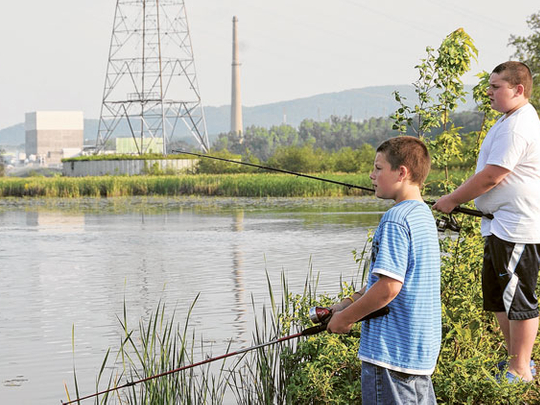
Braceville, Illinois: Radioactive tritium has leaked from three-quarters of US commercial nuclear power sites, often into groundwater from corroded, buried piping, an AP investigation has showed.
The number and severity of the leaks has been escalating, even as federal regulators extend the licenses of more and more reactors across the nation.
Tritium, a radioactive form of hydrogen, has leaked from at least 48 of 65 sites, according to US Nuclear Regulatory Commission (NRC) records reviewed as part of the AP’s examination of safety issues at aging nuclear power plants.
Hundreds of times over the limit
Leaks from at least 37 contained concentrations exceeding the federal drinking water standard — sometimes at hundreds of times the limit.
While most leaks have been found within plant boundaries, some have migrated off site. But none is known to have reached public water supplies.
Contamination
At three sites, two in Illinois and one in Minnesota, leaks have contaminated drinking wells of nearby homes, records show, but not at levels violating the drinking water standard. At a fourth site, in New Jersey, tritium has leaked into an aquifer and a discharge canal feeding Barnegat Bay off the Atlantic Ocean.
Any exposure to radioactivity, no matter how slight, boosts cancer risk, according to the National Academy of Sciences. Federal regulators set a limit for how much tritium is allowed in drinking water, where this contaminant poses its main health risk.
The US Environmental Protection Agency says tritium should measure no more than 20,000 picocuries per litre in drinking water. The agency estimates seven of 200,000 people who drink such water for decades would develop cancer.
The tritium leaks also have spurred doubts among independent engineers about the reliability of emergency safety systems at the 104 nuclear reactors situated on the 65 sites. That’s partly because some of the leaky underground pipes carry water meant to cool a reactor in an emergency shutdown and to prevent a meltdown. Fast moving, tritium can indicate the presence of more powerful radioactive isotopes, like cesium-137 and strontium-90.
Safeguards
Federal and industry officials say the tritium leaks pose no health or safety threat. But Mario V. Bonaca, a former member of the NRC’s Advisory Committee on Reactor Safeguards said: “Any leak is a problem because you have the leak itself — but it also says something about the piping. Evidently something has to be done.”
Tritium threat
Last year, the state Senate was so troubled by dangerous radioactive tritium leaks it voted to block relicensing. But in March this year, the Nuclear Regulatory Commission granted the plant a 20-year extension.
"Any leak is a problem because you have the leak itself — but it also says something about the piping. Evidently something has to be done” - Mario V. Bonaca, Former NRC advisory committee member.












